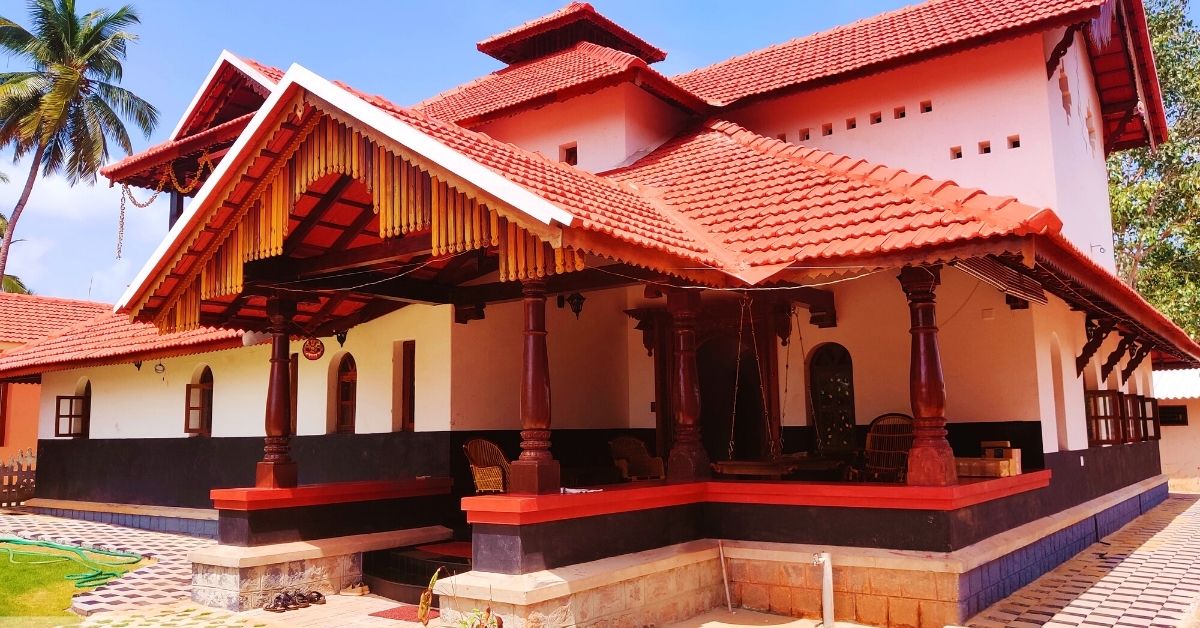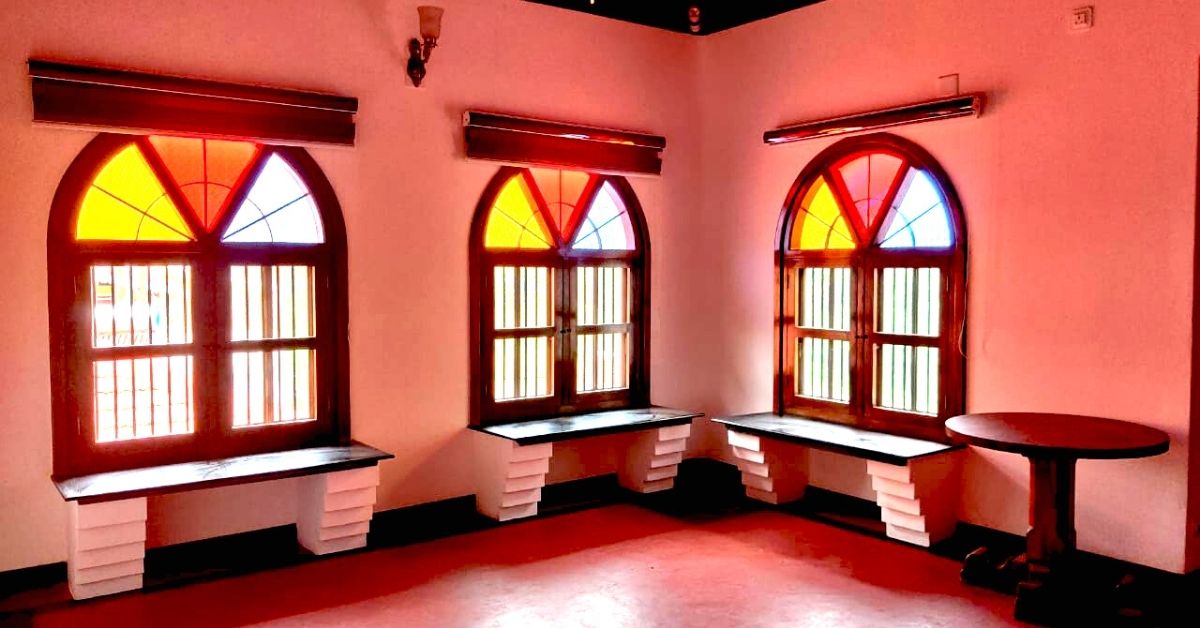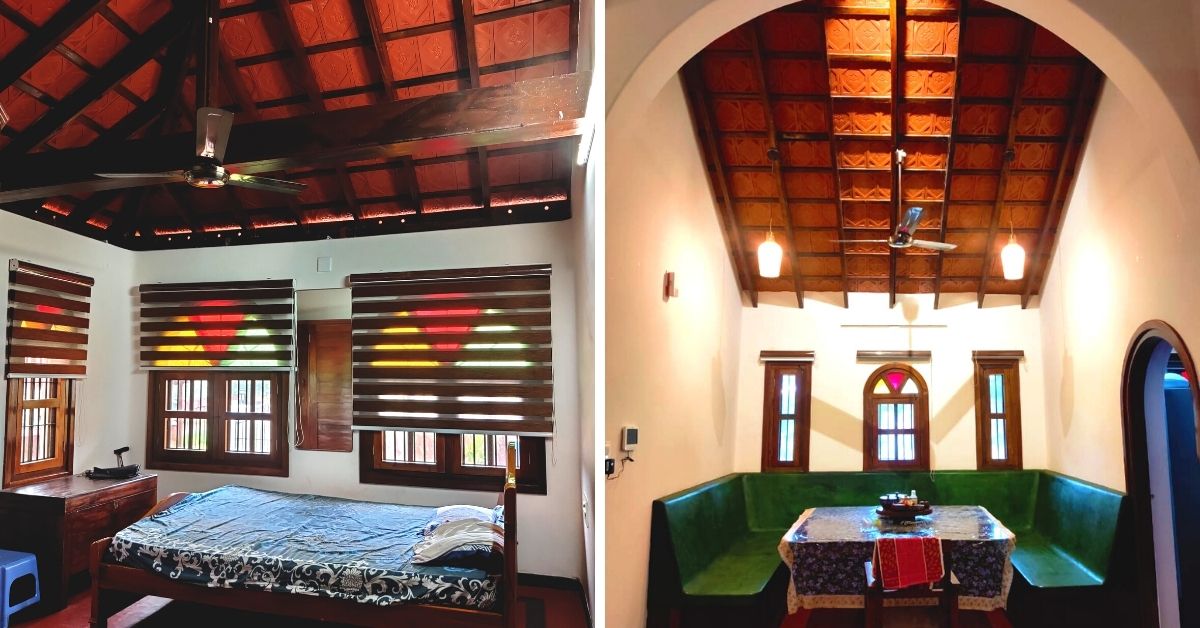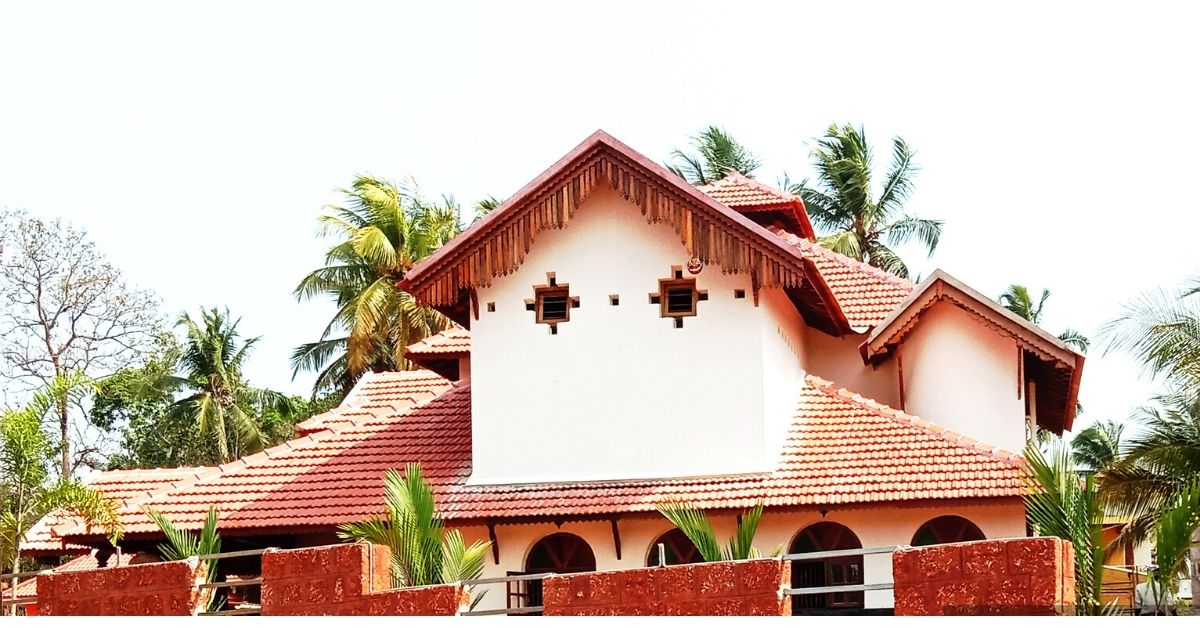Architect Builds Recyclable 5-Bedroom House that Stays Naturally Cool in Summers
Architects Nithin MS and Manoj Badkillaya, built a sustainable home in Karnataka that has reused old wood and roof tiles along with locally-sourced materials. This is how it took shape

Have you ever imagined what it entails to construct a building? Along with the hefty expenditure, the materials used brings devastating effects on ecology, society and the economy. Reports claim that residential properties contribute between 17 and 21 per cent of energy-related carbon emissions across the world.
Mysuru-based architects Nithin MS and Manoj Badkillaya were well aware of the impacts their profession caused on the planet. “We were waiting for an opportunity where we could build a house which could be recycled and also complements the local ecology,” says Nithin.
The founders of Praangana Earthen Architecture were already putting baby steps toward the direction of using mud for construction, moulding bricks and making walls using natural materials.
“In 2017, I visited a childhood friend at his residence in Mumbai where the doors to an exciting opportunity were opened. I was explaining my work, and my friend expressed that his father, BV Rao, was looking to construct a traditional house at his native Udupi,” he adds.

The 29-year-old says that further conversations with his friend and his father revealed that they wanted a home where the entire family could stay together.
“Earlier, we decided to build a rustic house with a Mediterranean and tropical touch. But with more discussions, it evolved into a magnificent design of a five-bedroom house using locally-sourced material,” he says.
By 2021, the house named ‘Udupi Mane’, built on 47 cents of land, became a unique property in town and, at the same time, complimented every aspect of traditional rural life.
Towards A Sustainable Planet
Moreover, the house has used 95 per cent less concrete than a conventional setup and keeps the temperatures inside 4 degrees cooler during summers.
Nithin explains, “Apart from giving it a traditional look, traditional methods have been implemented in building the house. The use of cement and steel was highly restricted, and conscious efforts have been made to source the majority of the materials from local sources to cut down on carbon footprint. More than half of the materials sourced include repurposed materials such as wood from jackfruit, African tulip tree and others.”
The architects have used the wood to build roof support beams, front porch columns, cabinets, frames and other elects. “All the wood used in construction is reclaimed from old torn down buildings. The reason for choosing reused wood is that when old buildings get demolished, their wooden elements are used as fuel for a fire or left to rot away. In both cases, greenhouse gases like carbon dioxide and methane are emitted. Instead, when we reuse this old wood, there is much to be gained,” he says.
Manoj says these wooden materials last longer than the new wood as they are cut from adequately matured trees, making them naturally resistant to termites. “They are also cheaper than purchasing new teak wood,” he adds.

The wood has also been used to prepare a traditional flat roof, locally known as ‘Mucchige’ in Kannada. It translates to ‘roof enclosure’.
Wood was also used to construct the slab prepared to bear the load of Mangalore tiles installed on the roof. “We preferred pre-used tiles as they come for half the price including the cleaning and repainting expenses compared to the newer products. They are tougher than the newly prepared tiles as they have withstood the weather conditions over time and developed resistance. And the materials reused help save on the carbon footprint and energy costs by avoiding the need to manufacture a new set of materials,” Manoj says.
The 27-year-old adds, “The masonry of stone foundation and laterite walls are made from lime mortar with a traditional recipe using cashew oil, jaggery, river sand and lime. The cashew oil works as a binding agent while fermented black jaggery works for its stickiness and quick hardening of the mixture.”
The house floor bears a finish of red oxide that brings a traditional charm to the house. The house furniture such as sofa, seating areas and dining areas are constructed within the structure. “They are finished with yellow oxides, jade-green oxides and chocolate brown oxide colours,” he says.
The plastered walls help the indoor areas remain cool even during the hottest of coastal summers. The lime also creates a healthy non-toxic indoor environment and increases the longevity of the building.
Another climate control feature of the house is fitting small windows for ventilation. Manoj explains, “The rural areas of Udupi witness a sharp visual glare. So, we decided to use multiple small windows rather than large ones. To combat hot and humid weather conditions, we have addressed aspects of active and passive ventilation.”
He says that 80 per cent of the air rises from the space and exits from the vents provided under the topmost pyramid roof. “The system ensures the flow of adequate fresh air and thermal comfort. A corridor runs along the southern and western edges of the house, creating a heat buffer from harsh south-west sunlight. This corridor also connects to the garden space, located behind, creating a connection between the garden and the house which ensures uninterrupted circulation of cool air,” he adds.

“The house does not have columns or beams as observed in conventional housing, which reduces the use of concrete,” he says, adding, “Arches and corbelled arches have been extensively used to achieve a very stable load-bearing structure.”
Manoj says the arches have a gradual load transfer path, making them structurally sound as they are self-supporting structural elements. Arches can be built using less energy-intensive materials like bricks, thus avoiding RCC lintels or beams.
Nithin adds that the overall features of the house bring the construction costs lower by about 10 per cent. “But it has significant benefits to the environment and keeps the residents free from toxic chemicals used in paints. It also keeps the soaring summer temperatures at bay,” he adds.
A resident of the house, BV Rao, says, “I have lived in Mumbai all my life and dreaded the harsh heat that radiates during peak summer months. I wanted to do my bit to prevent climate change and hence preferred building a sustainable home. Since our stay over the past year, I have observed some positive visible differences.”
He adds that the natural coolness of the house is evident once a person enters the property from outside. “It feels cooler and comfortable. We have not used any granite or processed material for the house, making it natural and organic. I hope more people opt for such sustainable practices,” Rao says.
Edited by Yoshita Rao
If you found our stories insightful, informative, or even just enjoyable, we invite you to consider making a voluntary payment to support the work we do at The Better India. Your contribution helps us continue producing quality content that educates, inspires, and drives positive change.
Choose one of the payment options below for your contribution-
By paying for the stories you value, you directly contribute to sustaining our efforts focused on making a difference in the world. Together, let’s ensure that impactful stories continue to be told and shared, enriching lives and communities alike.
Thank you for your support. Here are some frequently asked questions you might find helpful to know why you are contributing?


This story made me
-
97
-
121
-
89
-
167











